




 Irish Sea
Irish Sea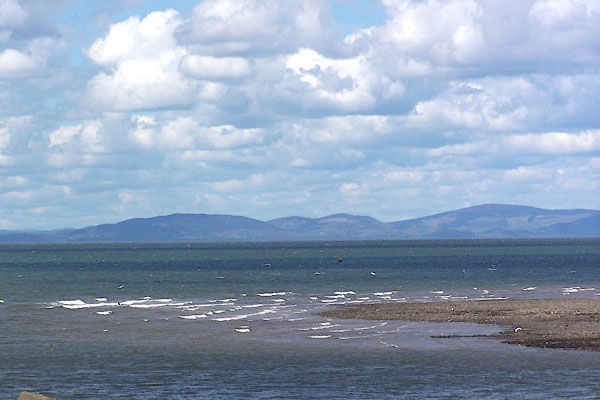
BNQ81.jpg Solway Firth, Galloway coast, from the Port of Workington.
(taken 14.5.2007)
placename:- Solway Firth
OS County Series (Cmd 15 3)
OS County Series (Cmd 35 2)
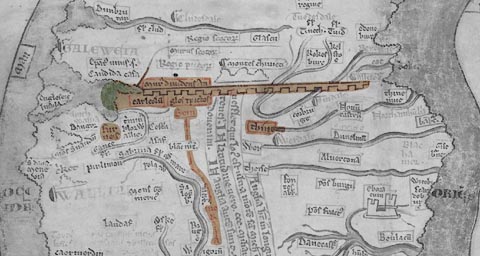 click to enlarge
click to enlargePAR2Cm.jpg
Estuary.
derived from copyright image, courtesy of Corpus Christi College
item:- Corpus Christi, Cambridge : MS16.f4.5
Image © see bottom of page
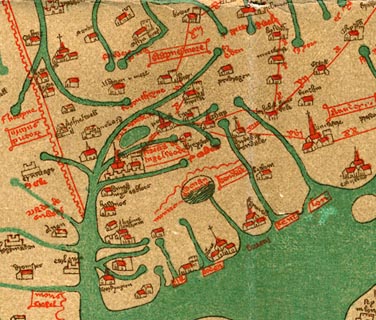 click to enlarge
click to enlargeGgh1Cm.jpg
Not labelled.
item:- JandMN : 33
Image © see bottom of page
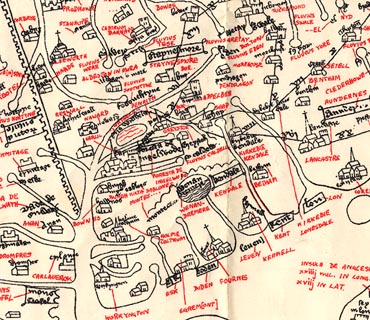 click to enlarge
click to enlargeGgh2Cm.jpg
Not labelled.
item:- JandMN : 34
Image © see bottom of page
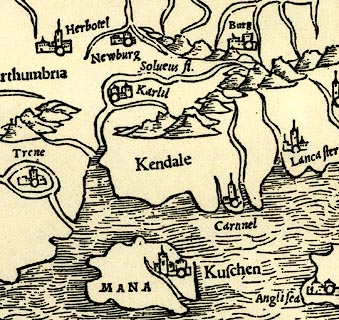 click to enlarge
click to enlargePTY4Cm.jpg
river estuary
item:- private collection : 131
Image © see bottom of page
 click to enlarge
click to enlargeLld1Cm.jpg
item:- Hampshire Museums : FA1998.69
Image © see bottom of page
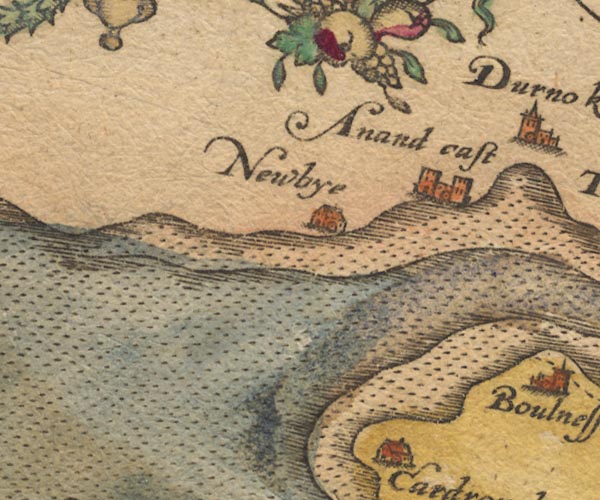
Sax9NY16.jpg

Sax9NY26.jpg
item:- private collection : 2
Image © see bottom of page
placename:- Soulua Sands
courtesy of the National Library of Scotland
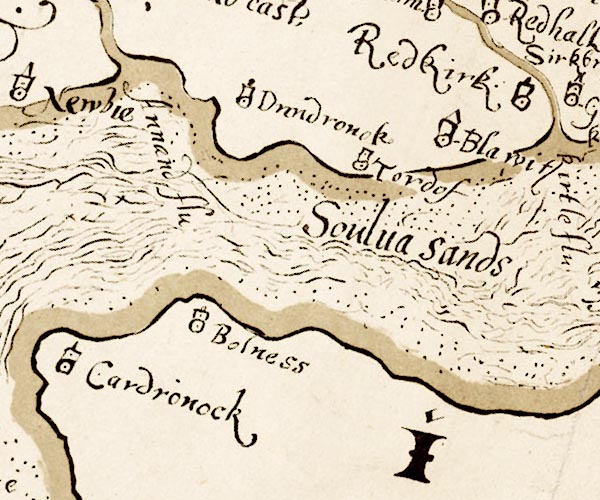
M048NY26.jpg
"Soulua Sands"
wavy lines
item:- National Library of Scotland : MS6113 f.267
Image © National Library of Scotland
placename:- Solway Fryth

MER8CumB.jpg
"Solway Fryth"
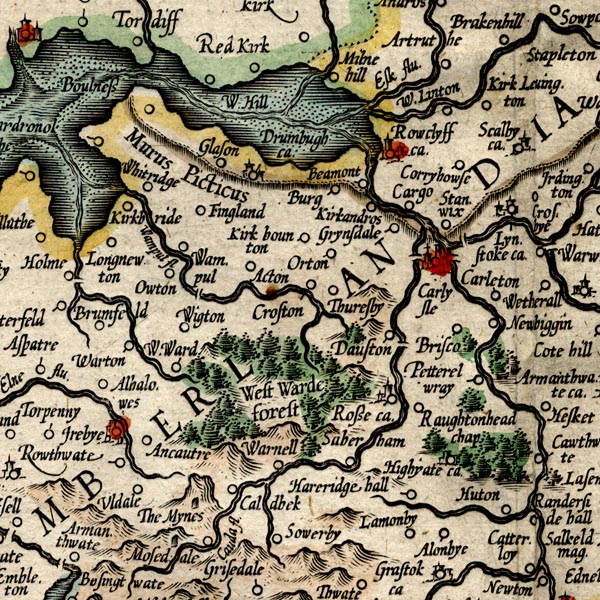
MER8CumC.jpg
estuary
item:- JandMN : 169
Image © see bottom of page
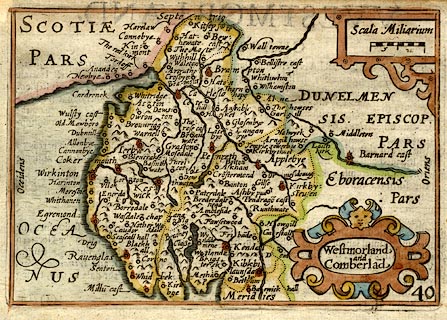 click to enlarge
click to enlargeKER8.jpg
""
sea area
item:- Dove Cottage : 2007.38.110
Image © see bottom of page
placename:- Solway Frith
placename:- Ituna Baye
 goto source
goto sourcefirst page:- "... Solway Frith, by Ptolemie called the Ituna Baye. ..."
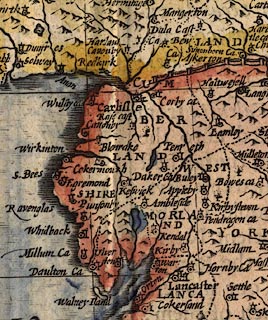 click to enlarge
click to enlargeSPD6Cm.jpg
estuary
item:- private collection : 85
Image © see bottom of page
placename:- Itunae Baye

SP11NY16.jpg
"Itunae Baye"
estuary, river channel and foreshore sands
item:- private collection : 16
Image © see bottom of page
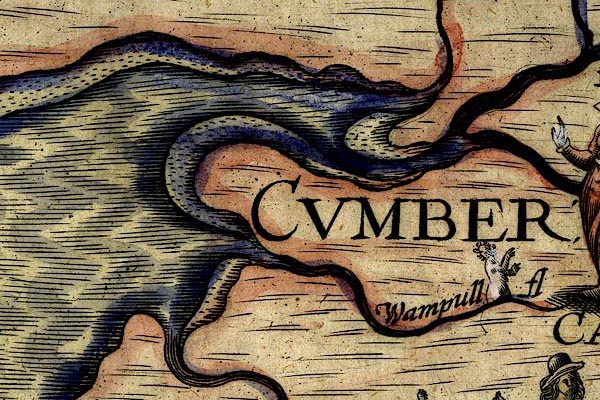
DRY505.jpg
Sea more effect, coast shaded, foreshore sands.
item:- JandMN : 168
Image © see bottom of page
placename:- Itunae Baye
placename:- Eden Flude
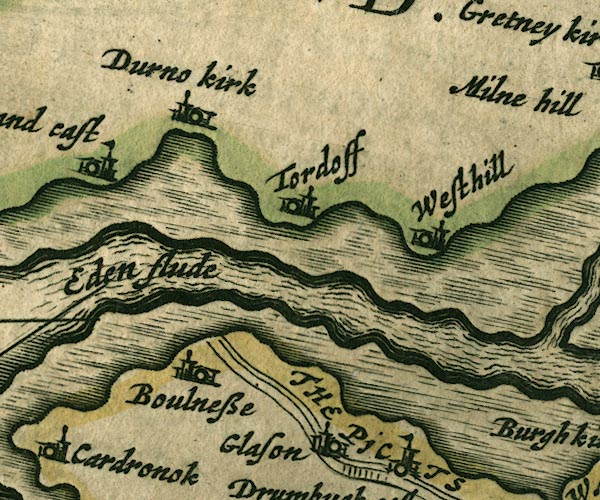
JAN3NY26.jpg
"Eden flude"
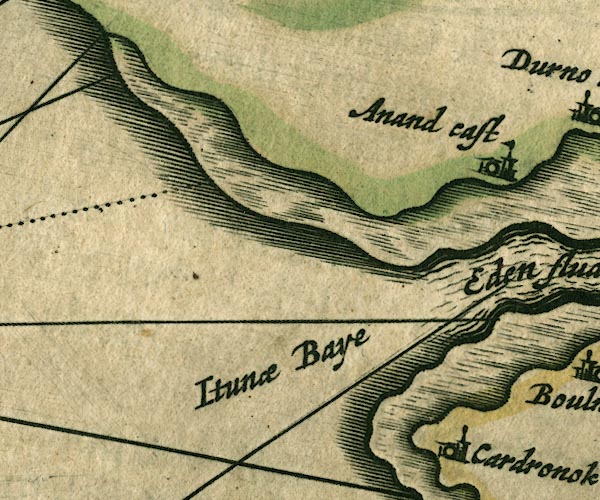
JAN3NY16.jpg
"Itunae Baye"
item:- JandMN : 88
Image © see bottom of page
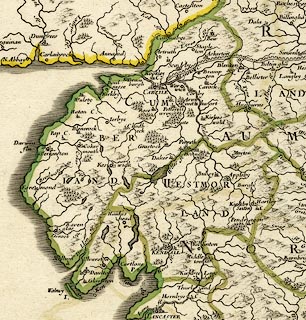 click to enlarge
click to enlargeSAN2Cm.jpg
estuary
item:- Dove Cottage : 2007.38.15
Image © see bottom of page
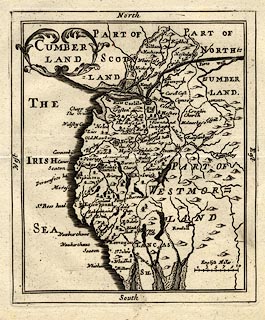 click to enlarge
click to enlargeSEL9.jpg
estuary
item:- Dove Cottage : 2007.38.89
Image © see bottom of page
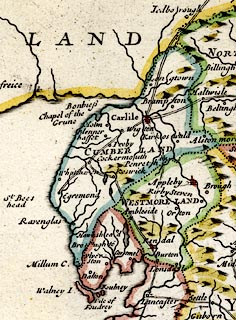 click to enlarge
click to enlargeMRD3Cm.jpg
estuary
item:- JandMN : 339
Image © see bottom of page
placename:- Solway Frith
placename:- Itunae Flu.
placename:- Eden River
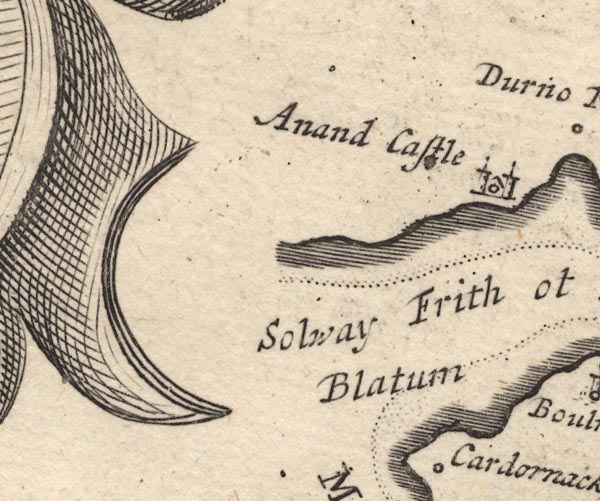
MD12NY16.jpg

MD12NY26.jpg
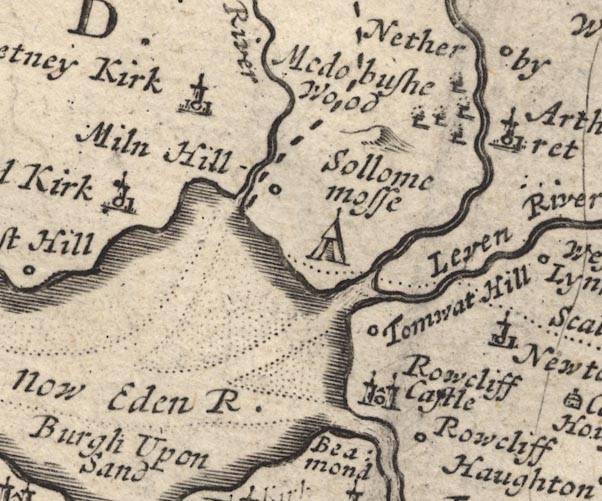
MD12NY36.jpg
"Solway Frith ot Itunae Flu now Eden R."
River estuary.
item:- JandMN : 90
Image © see bottom of page
placename:- Itunian Bay
placename:- Solway Frith
"The Eden (at 1 P.161) after having receiv'd several other considerable Rivers, empties it self into ye Ituni: an Bay, ..."
"About 6 Miles farther in the Itunian Bay or Solway Frith, on a Cape of Land is Bolness the Old Blatum Bulgiu~, formerly a Roman Station, ..."
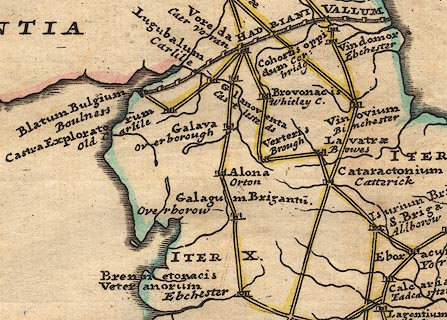 click to enlarge
click to enlargeStu1Cm.jpg
item:- Hampshire Museums : FA2001.171
Image © see bottom of page
"... Carlisle is strong by situation, being almost surrounded with rivers. On the east it has the River Potterell, on the north Eden, and on the south the Cande, or Canda, or Calda, which all fall into the arms of the sea, which they call the Solway, or Solway Firth."
placename:- Solway Frith
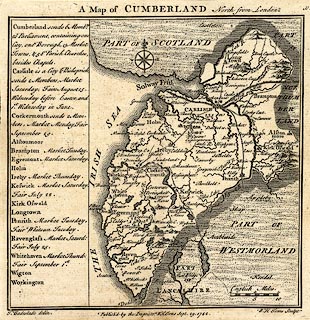 click to enlarge
click to enlargeBD10.jpg
"Solway Frith"
estuary, sea area
item:- JandMN : 115
Image © see bottom of page
placename:- Solway Frith
placename:- Mouth of the River Eden
placename:- Hunae Ostium
 goto source
goto source"..."
"On the N.W. of Carlisle, there juts out a small Promontory, at the Point of which is the large Arm of the Sea, call'd Solway-Frith, or Hunae-Ostium i.e., the Mouth of the River Eden. It is, at present, the Boundary between England and Scotland, but anciently between the Roman Provinces and the Picts."
placename:- Solway Frith
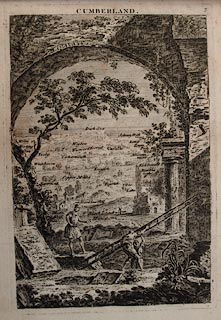 click to enlarge
click to enlargeJL05.jpg
"Solway Frith"
view (sort of)
item:- Carlisle Library : 4.2
Image © Carlisle Library
placename:- Solway Frith
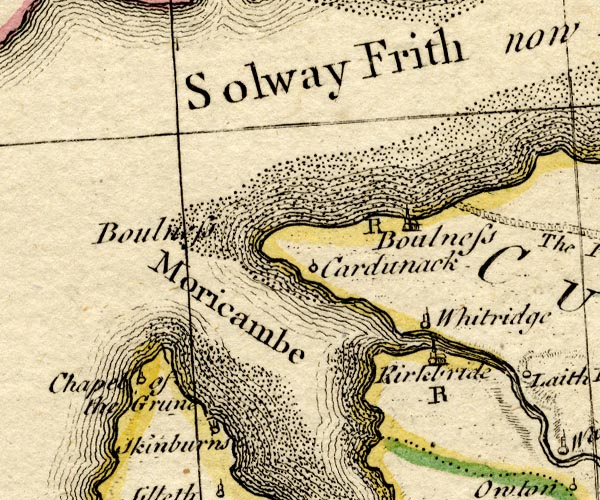
BO18NY15.jpg
"Solway Frith [now Eden River]"
sea area
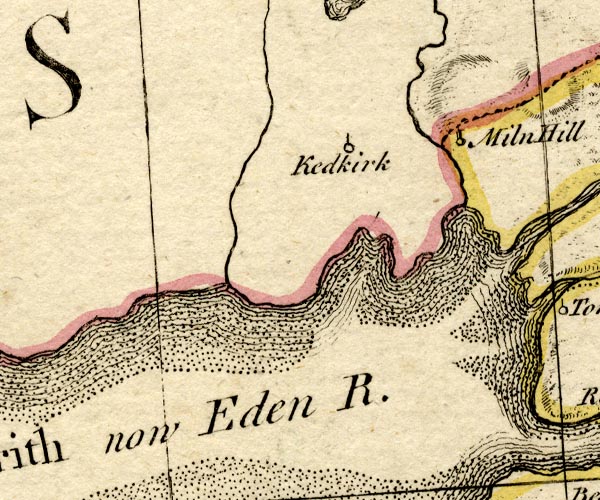
BO18NY26.jpg
"[Solway Frith] now Eden R."
sea area
item:- Armitt Library : 2008.14.10
Image © see bottom of page
placename:- Solway Firth
placename:- Eden River
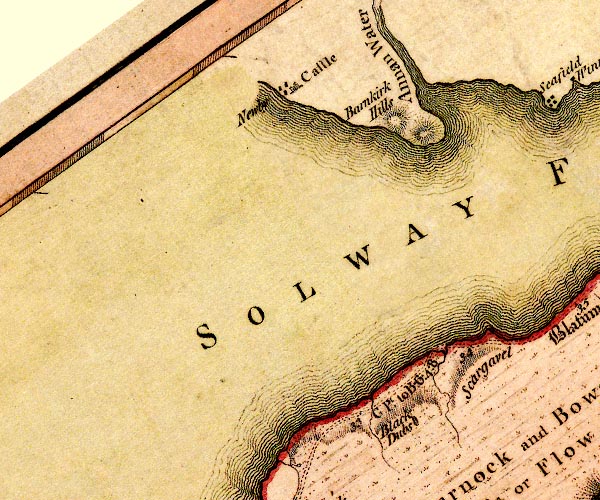
D4NY16SE.jpg
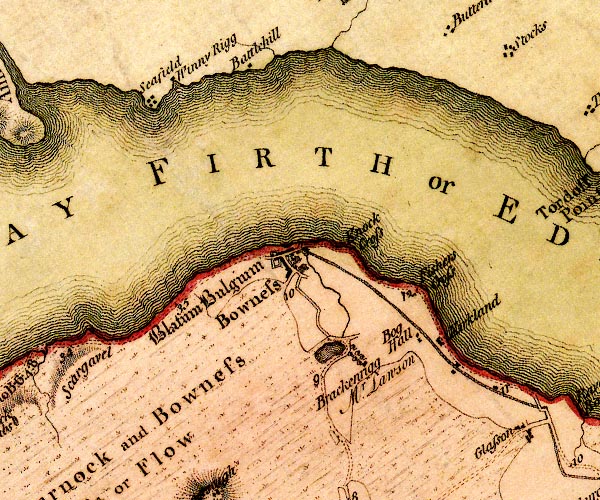
D4NY26SW.jpg
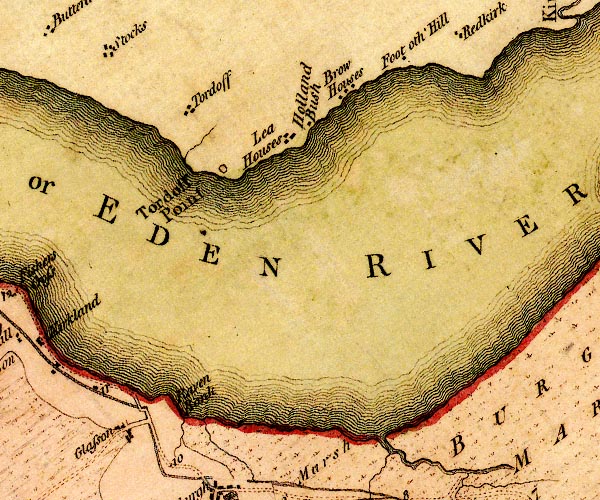
D4NY26SE.jpg
"SOLWAY FIRTH or EDEN RIVER"
estuary
item:- Carlisle Library : Map 2
Images © Carlisle Library
placename:-
 goto source
goto sourcePage 21:- "... ... ..."
"A description of the Tides, Rocks, Shoals, and Anchoring-places, in the MOUTH OF SOLWAY FIRTH."
"CHART XIII."
"TIDES / Tides in the Mouth of SOLWAY FIRTH"
"Time of high-water. / In the mouth of Solway Firth, both on the English and Scotch side, it is high-water on the full and change days of the moon at eleven o'clock."
 goto source
goto sourcePage 22:- "Rise of the Tide. / Spring-tides rise twenty feet perpendicular; neap-tides eleven or twelve feet."
"Velocity of the Stream. / Spring-tides near Burrow Head, in Scotland, run about three miles an hour when strongest; neap-tides one. In other parts of the coast, included in this draft, the stream is not so strong."
"Direction of the Stream. / The principal stream of flood that fills Solway Firth, comes from the N.W. between the Mule of Cantire and Ireland; part of which runs along the Mule of Galloway, and from thence up Solway Firth."
"ROCKS and SHOALS. / There are no rocks or shoals in the mouth of Solway Firth, excepting such as lie within the bays or harbours, and will be described with them, or may be seen distinctly in the draft."
"... ... ..."
"A Description of the Tides, Rocks, Shoals, Sand-banks, Channels, Anchoring-places, and Harbours in SOLWAY FIRTH."
"CHART XIV."
"TIDES. / Tides in SOLWAY FIRTH."
"Time of High-water on the English side, and on the Scotch side. / It is high-water on the full and change days of the moon in Whitehaven, in Cumberland, at eleven o'clock; in Mary-Port at 11½; at Bowness and Annan at twelve; at Saturness Point, in Scotland, at 11¼; in the harbour of Kirkcudbright at eleven."
 goto source
goto sourcePages 23-24:- "Rise of the Tide. / Spring-tides in Solway Firth, on both sides, rise about twenty feet perpendicular; neap-tides about twelve: off Carsthorn, near the mouth of the river Nith, spring-tide rises seventeen or eighteen feet perpendicular; near Saturness Point it rose twenty-four feet."
"Direction of the Stream. / The stream of flood, which fills Solway Firth, comes from the north-west, between the Mule of Cantire in Scotland and Rachlin Island in Ireland, and from thence runs along the Mule of Galloway up Solway Firth."
"Velocity of the Stream on the English side. / The stream along the shore, on the English side, between St. Bee's Head and Mary-Port, runs about two miles an hour when strongest; from Mary-Port to Skinburness, three miles; from Skinburness to Bowness, five or six miles an hour: neap-tides have about one-third of that velocity."
"Velocity on the Scotch side. / The stream on the Scotch side, between the Bay of Kirkcudbright and Barnhowry Bank, when strongest, runs about three miles an hour; along the Point of Saturness, it runs five miles; and in the channel off Annan about six miles."
"..."
"Caution in sailing along the S. side of Solway Firth. / No vessel should sail eastward in Solway Firth, on the English side, above Dubmill-swap, except between half-flood and high-water: for, if they happen to ground with ebb-tide on any Bank in the tide-way, the stream, particularly with spring tide, will wash away the sand from the ship's side so as to overset her. If a vessel is under any necessity of running a ground, it should be done, if possible, under shelter of some point, or bight on the shore, to break the strength of the stream; and not in a channel, or on a detached Bank. The like caution is necessary on the Scotch side above Carsthorn."
 goto source
goto sourcePage 19:- "The Caledonians, the unconquered enemies and greatest plague of the Romans in Britain, were particularly galled and offended with the garrison at Lancaster, it being always the first to oppose them, as often as they invaded the empire, by crossing the Solway firth. For having taken advantage of the spring-tides and the darkness of the nights at the change of the moon, ..."
 goto source
goto sourceMrs Radcliffe's Ride over Skiddaw, 1794
Page 308:- "[on Skiddaw] ... The Solway appeared surprisingly near us, though at fifty miles distance; and the guide said, that, on a bright day, its shipping could plainly be discerned.- ..."
placename:- Solway Frith
placename:- Ituna
item:- border reiver
 goto source
goto sourcePage 172:- "..."
"A little higher up runs out a small cape, and below it lies a large aestuary, called by the Scots Solway"
 goto source
goto sourcePage 173:- "frith, now dividing England and Scotland as formerly the Roman province and the Picts. ..."
"..."
 goto source
goto sourcePage 173:- "..."
"Below this Burgh [by Sands], in the frith itself, the inhabitants say the Scots and English fleets engaged, and, on the retreat of the tide their cavalry, which seems as extraordinary as what Pliny relates with astonishment of a similar place in Caramania. This frith is called Solway frith by both nations from Solway a Scotch town on it. But Ptolemy more properly calls it ITUNA. For the noble river Eiden, which waters Westmoreland and the inner parts of this county, pours the largest quantity of water into it, still mindful of the obstruction it met with from the heaps of Scottish bodies in 1216 drowned in it in their return from England loaded with spoil, when it whelmed that band of marauders in its stream."
"..."
 goto source
goto sourcePage 173:- "... [Solway Frith] ... Ptolemy more properly calls it ITUNA. For the noble river Eiden, which waters Westmoreland and the inner parts of this county, pours the largest quantity of water into it, still mindful of the obstruction it met with from the heaps of Scottish bodies in 1216 drowned in it in their return from England loaded with spoil, when it whelmed that band of marauders in its stream."
placename:- Solway Frith
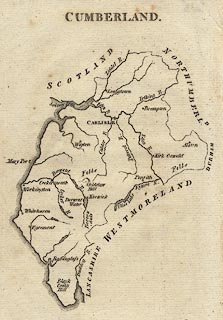 click to enlarge
click to enlargeAIK3.jpg
"Solway Frith"
estuary
item:- JandMN : 145
Image © see bottom of page
placename:- Ituna AEstuarium
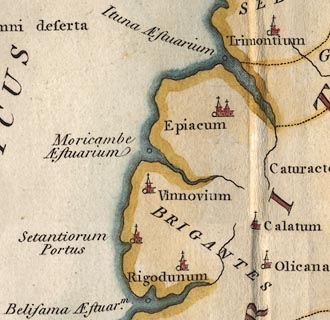 click to enlarge
click to enlargePTY3Cm.jpg
"Ituna AEstuarium"
item:- Hampshire Museums : FA2002.651
Image © see bottom of page
placename:- Ituna AEstuarium
placename:- Solway Firth
 click to enlarge
click to enlargeHOR1Cm.jpg
"Ituna AEstuarium / Solway Firth"
item:- JandMN : 429
Image © see bottom of page
placename:- Ituna estuarium
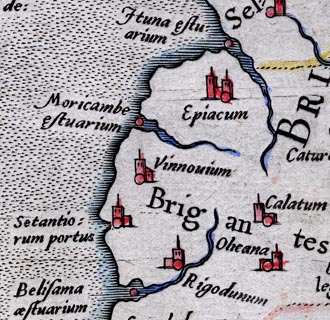 click to enlarge
click to enlargePty1Cm.jpg
"Ituna estuarium"
item:- private collection : 13
Image © see bottom of page
placename:- Solway Frith
placename:- Eden River
 click to enlarge
click to enlargeGRA1Cd.jpg
"Solway Frith or Eden R."
estuary
item:- Hampshire Museums : FA2000.62.2
Image © see bottom of page
placename:- Solway Firth
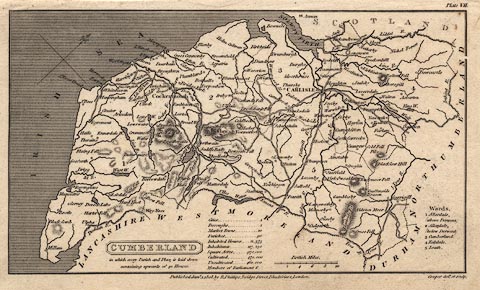 click to enlarge
click to enlargeCOP3.jpg
"SOLWAY FIRTH"
estuary
item:- JandMN : 86
Image © see bottom of page
placename:- Solway Firth
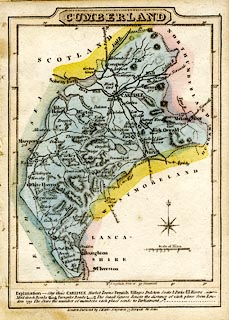 click to enlarge
click to enlargeWL13.jpg
"Solway Firth"
estuary
item:- Dove Cottage : 2009.81.10
Image © see bottom of page
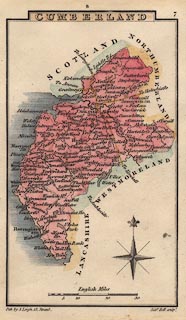 click to enlarge
click to enlargeHA14.jpg
estuary
item:- JandMN : 91
Image © see bottom of page
placename:- Solway Frith
 goto source
goto sourcePage 40:- "... the Eden, which enters the Solway Frith a little below Carlisle; ..."
placename:- Golfe Solway
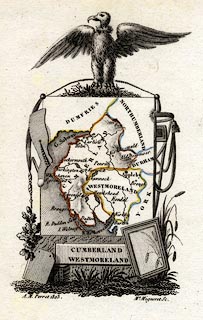 click to enlarge
click to enlargePER2.jpg
"G. Solway"
estuary
item:- Dove Cottage : 2007.38.45
Image © see bottom of page
placename:- Solway Firth
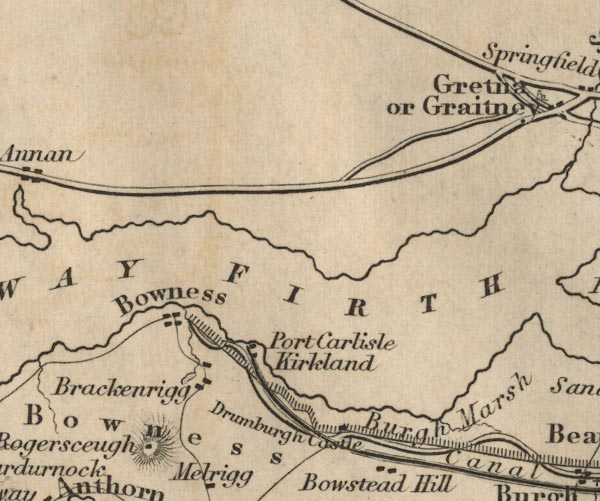
FD02NY26.jpg
"SOLWAY FIRTH"
item:- JandMN : 100.1
Image © see bottom of page
placename:- Solway Frith
MSN1P025.txt
Page 25:- "..."
"... The Solway Frith, into which the Eden flows, divides Cumberland from the Scotch county of Dumfries."
placename:- Firth of Solway
 goto source
goto sourcePage 387:- "..."
"FIRTH OF SOLWAY. - General remarks. - Caution. - The Firth of Solway lies between St. Bees head (Lat. 54~ 31' N., Long. 3~ 38' W.), on the Cumberland coast, and Abbey head, in the Scottish county of Kirkcudbright, 19 miles to the north-westward; from these points, the distance up to Annan, where navigation may be said to cease, is about 28 miles. The greater portion of this wide and extensive inlet is encumbered by shifting sandbanks, with deep-water channels between them; north-westward of Silloth it is so inconstant that a large portion is left blank on the chart. The best navigable channel, named English channel, is on the Cumberland side, and is lighted and buoyed; the others are unbuoyed."
"South-westerly gales generally cause the highest sea in the firth."
"With the wind between SW. and NW., a heavy sea is found as far up as Workington, but it decreases as the vessel proceeds. Having arrived at the entrance to the firth in a south-westerly gale, and being on the English side, a vessel would find but little difficulty in reaching Maryport road, where the sea is reduced by half; or, with careful navigation, even Silloth road; but, as stated below, vessels proceeding above Maryport are recommended to employ a pilot."
"Changes in the depths in the Firth of Solway are very rapid, and the chart cannot be considered as a safe guide to navigation. No vessel should attempt to enter the firth in misty weather, without having first sighted St. Bees head or the Two Feet Bank buoy; nor should any vessel, without local knowledge, proceed northward of Maryport roads. The entrance to the firth on the Scottish side, where the banks are farther offshore, and where there are neither leading marks or buoys to guide the seaman, should not be attempted without local knowledge."
"Whitehaven, Workington, Maryport and Silloth, all on the English shore, are the chief trading ports in the firth."
"Channels. - As stated above, the best navigable channel, and the only one which is buoyed, is English channel, which lies between the shoals that extend seaward from the coast between Harrington and Dubmill point, on the east, and Workington bank, Three Fathoms bank, and Robin Rigg, on the west. This channel carries a least charted depth of 5 1/2 fathoms (10m1), as far northward as a"
 goto source
goto sourcePage 388:- "position about 3 1/2 miles westward of Dubmill point, where it joins the Silloth channel, remarked on page 399."
"Middle channel, which lies between Two Feet bank and Robin Rigg, on the south-eastern side, and Dumroof bank, on the north-western side, has a least charted depth of 3 1/2 fathoms (6m4), to a position about 2 miles southward of Southerness point, above which position it becomes, successively, the Dumfries, Barbara and Powfoot channels."
"Pilots. - There are Trinity House pilots for Whitehaven, Workington, and Maryport, the pilot cutter, which does not cruise, being stationed at Whitehaven; vessels requiring pilots for any of these places can obtain them off Whitehaven, or may proceed to a point off their destination."
"The signal to be made during foggy weather by a vessel requiring a pilot is three long blasts; the reply is one long and two short blasts."
"Trinity House pilots for Silloth and Annan can be obtained at Maryport, on application to the Harbour Master at Silloth, or the pilots at Silloth or Annan."
"Caution. - The glare at night, caused by the numerous ironworks along the Cumberland coast, is liable to bewilder a stranger, as, at times, it makes the harbour lights difficult to distinguish; the lights from these works are particularly brilliant between St. Bees head (Lat. 54~ 31' N., Long. 3~ 38' W.) and Whitehaven."
"Tidal streams. - The tidal stream approaching the Firth of Solway passes inwards through the channel between the northern point of the Isle of Man and Burrow head, on the Wigtownshire coast. The direction and rate of the in-going stream, 5 miles northward of the Isle of Man, is eastward, at 3 knots at springs; half way between the Isle of Man and Burrow head, it is east-north-eastward, at 3 1/4 knots at springs; and 5 mile southward of Burrow head, it is north-eastward at 3 1/2 knots at springs. The corresponding direction and rate at springs of the out-going stream is, westward, at 3 knots; west-south-westward, at 3 1/4 knots; and westward, at 3 1/2 knots. The in-going stream makes to the eastward about 6 1/2 hours after high water at Dover, and turns to the westward soon after high water at Dover; the slack water usually lasts an hour, from the cessation of one stream until the beginning of the next."
"The in-going stream divides near St. Bees head, part turning northward into the Firth of Solway, and part to the south-eastward along the Cumberland coast, as described at page 386."
"The streams in and out of the Firth of Solway run strongest along the Scottish shore; midway between Abbey head and St. Bees head the maximum rate is 3 1/2 knots at springs. North-eastward of a line joining Abbey head and St. Bees head, the whole area, for a space of 25 miles, is encumbered with sandbanks, through which the rivers discharging into the head of the Firth of Solway maintain two fairly deep channels, the one on the Scottish side being named Middle channel, and the other, on the English side, English channel. Through these channels, the streams run at a maximum rate of 4 knots at springs, the in-going stream at their entrances running from 5 1/4 hours before until three-quarters of an hour after high water"
 goto source
goto sourcePage 389:- "at Dover, which is, practically, the same time as on the shore, and the out-going from three-quarters of an hour after high water until 5 hours before the following high water."
"About 10 miles north-eastward of the entrance, the streams are later. See table of "Tidal Streams" on chart 1346."
"The principal tidal flow into and out of the Firth of Solway is through Middle channel and thence by Dumfries, Barbara and Powfoot channels. Immediately off Southerness point is a deep channel, through which the streams run at a rate of 5 knots, at springs, and of 3 knots at neaps, and these rates continue or increase in the Dumfries and Powfoot channels, leading to the entrance of the River Annan, off which springs occasionally attain a rate of 6 knots, and near which the in-going stream runs for 4 hours only, whilst the out-going stream runs for 8 hours."
"The scars or stone banks which extend westward from Dubmill point, about midway between Maryport and Silloth, obstruct the tidal flow, so that there is but little tidal stream in Allonby bay, and from thence northward to Silloth, whilst the banks northward of the scars are covered, only the last of the in-going and the first of the out-going streams being felt in these parts."
"Similarly, Southerness point, which projects more than 2 miles from the general line of the coast on the opposite side of the firth, creates slack water on either side of it, and favours the formation of sandbanks."
"..."
"Southern side of Firth of Solway. - Coast. - The cliffs for a distance of about one mile northward of St. Bees head are of sandstone, with several quarries in them; farther northward, both the coast cliffs and the high land in the rear have a gradual descent. Whitehaven is situated about 2 1/2 miles northward of St. Bees head, and between is Saltom bay."
"Saltom bay is skirted by oyster grounds, and depths of less than 3 fathoms (5m5) extend about half a mile offshore."
"Anchorage. - Saltom bay affords a good anchorage with offshore winds. The depths of the approach to Whitehaven are regular,"
 goto source
goto sourcePage 390:- "and anchorage may be taken up about 5 cables off, and abreast of the entrance, in depths of from 5 to 6 fathoms (9m1 to 11m0), sand."
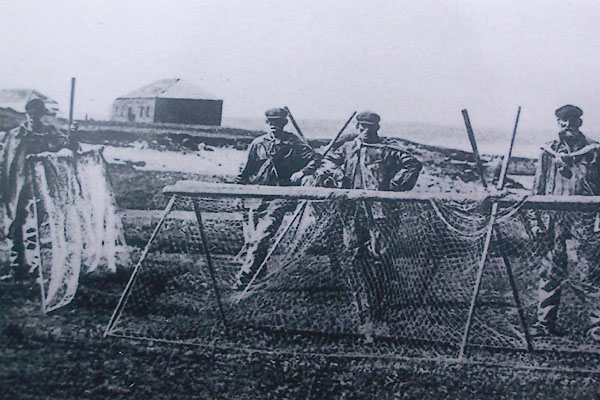
BMB09.jpg Courtesy of the Hope and Anchor, Port Carlisle
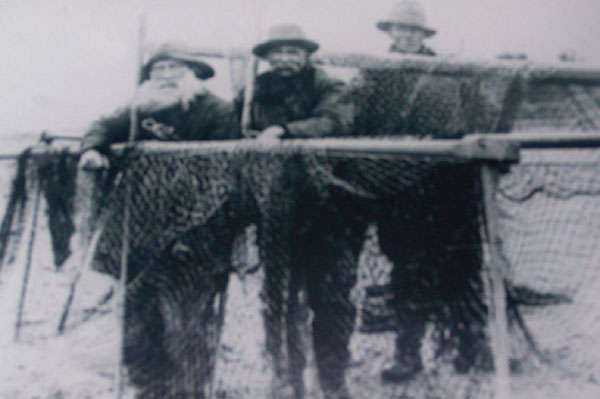
BMB10.jpg Courtesy of the Hope and Anchor, Port Carlisle
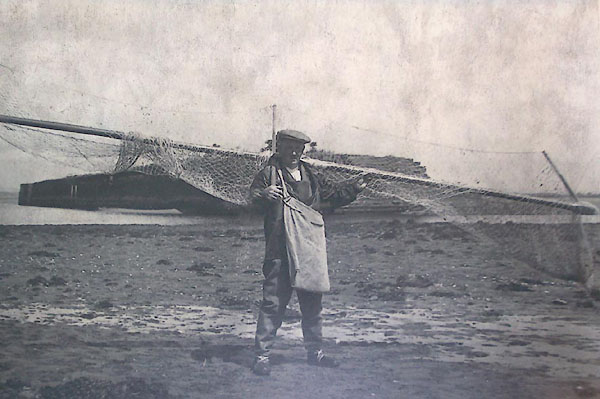
BMB11.jpg Courtesy of the Hope and Anchor, Port Carlisle
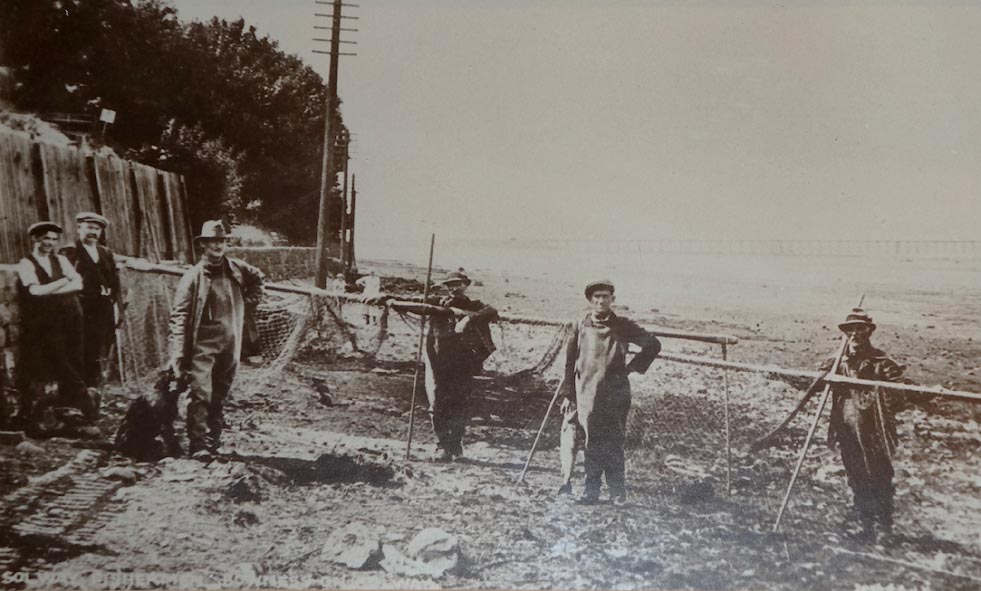
Click to enlarge
CBM56.jpg Courtesy of the Highland Laddie, Glasson
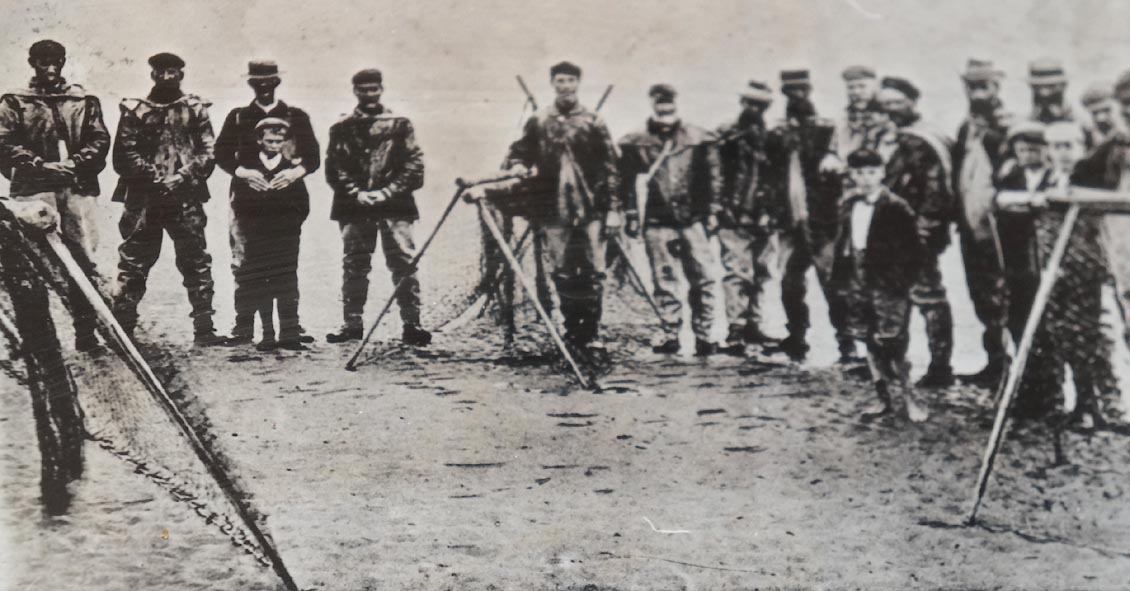
Click to enlarge
CBM58.jpg Courtesy of the Highland Laddie, Glasson
placename:- Solway Firth
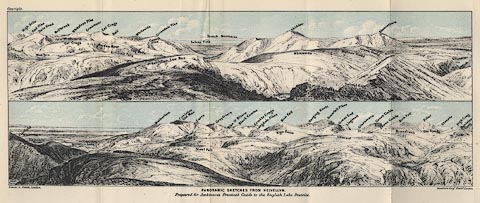 click to enlarge
click to enlargeJk01E1.jpg
"... Solway Firth ..."
item:- JandMN : 28.5
Image © see bottom of page
placename:- Solway Firth
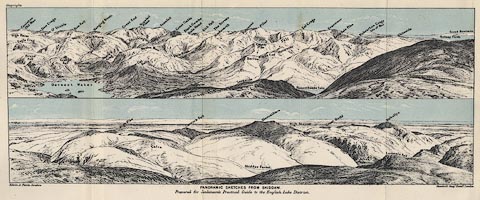 click to enlarge
click to enlargeJk01E2.jpg
"... Solway Firth ..."
item:- JandMN : 28.8
Image © see bottom of page
item:- boat
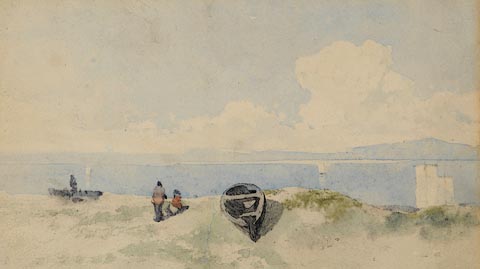 click to enlarge
click to enlargePR0952.jpg
In foreground three figures wait beside two small boats pulled onto the foreshore of an estuary. Small whitewashed building stands to right of composition. This is possibly a view of Allonby
item:- Tullie House Museum : 1946.67.22
Image © Tullie House Museum
placename:- Solway, The
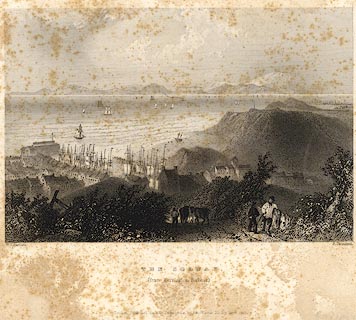 click to enlarge
click to enlargePR0076.jpg
Probably from Findens Views of the Ports, Harbours, Coast Scenery, and Watering Places of Great Britain, as continued by W H Bartlett.
printed at bottom left, right, centre:- "W. H. Bartlett. / R. Brandard. / THE SOLWAY / (from Harrington Harbour.) / London: Published for the Proprietors, by Geo: Virtue, 26, Ivy Lane, 1841."
item:- Dove Cottage : 2008.107.76
Image © see bottom of page
item:- boat; packet boat; steam ship; flotsam
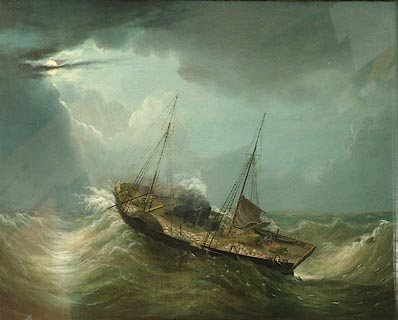 click to enlarge
click to enlargePR0840.jpg
A packet boat is tossed upon a stormy sea, its sails furled. The silvery glow of a full moon illuminates the troughs of the waves. Part of the boat's cargo of sacks has been swept overboard and floats beside and behind it.
item:- Tullie House Museum : 1920.11.2
Image © Tullie House Museum
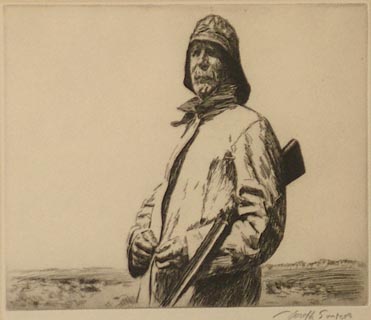 click to enlarge
click to enlargePR1210.jpg
Half length depiction of a wildfowler, middle aged, facing left, his head turned to regard the viewer. He wears waterproofs and rests a rifle under his left arm. He is seen against a background of flat marshland.
signed at bottom right:- "Joseph Simpson"
item:- Tullie House Museum : 1978.108.67
Image © Tullie House Museum
